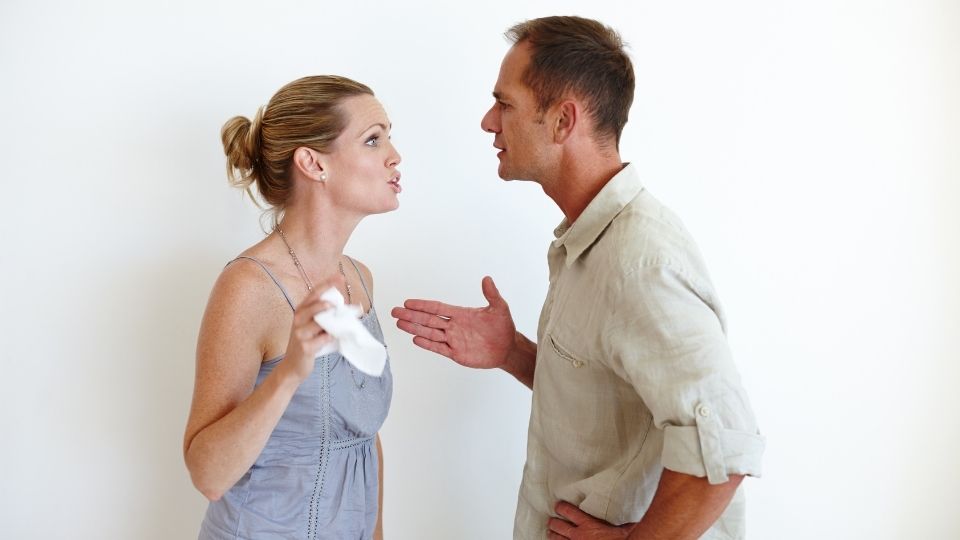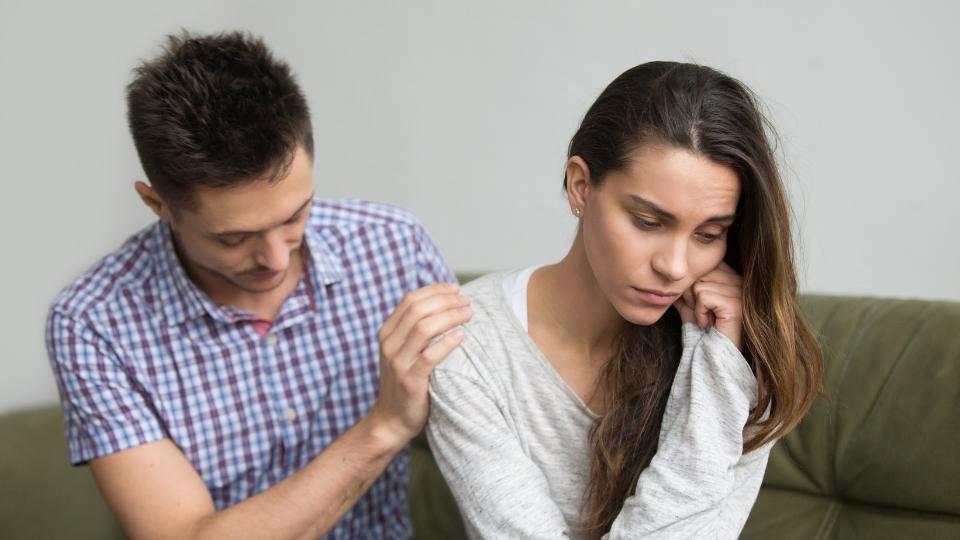Effects of Pornography on Relationships

Viewing sexually explicit content or “pornography” has become increasingly commonplace (Price et al., 2016). Research indicates that 46% of adult men and 16% of women intentionally view pornography in an average week (Regenerus, Gordon, & Price, 2016).
Many individuals never anticipate or expect that viewing pornography will negatively influence their lives. Yet, usage often significantly impacts the user as well as his or her family, workplace, and community (Camilleri et al., 2021; Fight the New Drug, 2023; Park et al., 2018). The couple relationship, in particular, often feels the negative effects of pornography.
While some research has found that pornography use as a couple can potentially have some positive outcomes, such as a willingness to try new sexual behaviors or increased sexual intimacy (Grov, Gillespie, Royce & Leve, 2011; Huntington et al., 2021; Willoughby & Leonhardt, 2020), the same research--and others--have found far more potential negative impacts (Huntington et al., 2021; Leonhardt et al., 2019; Willoughby et al., 2016; Willoughby & Leonhardt, 2020). This fact sheet will review some of the impacts of pornography on partner relationships and provide steps toward healing a relationship hurt by pornography.
Negative Impacts
Pornography can have negative consequences for both the user and his or her intimate partner. Some of the common damaging effects of pornography for users can include addiction, isolation, increased aggression, distorted beliefs and perceptions about relationships and sexuality, negative feelings about themselves, and neglecting other areas of their lives (Fight the New Drug, 2023; Maltz & Maltz, 2006; Manning, 2006). These negative consequences often carry over into other aspects of their lives, especially family and couple relationships. Within couple intimate relationships, pornography can have negative impacts in the following ways (Bridges et al., 2003; Huntington et al., 2021; Lambert et al., 2012; Manning, 2006; Schneider, 2003; Willoughby et al. 2016; Willoughby & Leonhardt, 2020):
- User faces difficulty becoming sexually aroused without pornography.
- User loses interest and engages in fewer sexual experiences with partner.
- Pornography consumption may be correlated with increased behaviors of hooking up and infidelity.
- Partner feels sexually inadequate and threatened by pornography use.
- Partner may feel that certain sexual activities desired by user are objectionable.
- Both user and partner experience decreased relationship sexual satisfaction and emotional closeness.
- Relationship trust decreases due to dishonesty and deception about pornography use.
- Both user and partner experience lower relationship satisfaction and stability, less positive communication, and more psychological aggression between partners.
- One or both partners may be concerned about children’s exposure to pornographic materials.
Steps Toward Change
While the negative impact on relationships can be challenging to overcome, healing is possible. It is first essential that an individual wants to make the steps toward recovery. Others may encourage steps toward change, but only the user can ultimately make the transformation (Landau et al., 2008). Without internal motivation, change will likely be superficial or short-lived. Second, the user must implement strategies to strengthen motivation to quit pornography. Some strategies may include:
- Become aware and understand how pornography creates problems. For individuals struggling with addiction, it may be important to set aside time to honestly evaluate the impact of past pornography and possible future outcomes to strengthen their resolve to change. For partners, an open conversation about the negative effects may be helpful (Hawkins, 2022; Zitzman & Butler, 2005). While it is a difficult topic to approach, both partners should have time to express how the pornography usage makes them feel without interruption and judgment from the other person. If the conversation turns into an argument, partners can agree to take a break and return to the topic after anger and frustration have subsided.
- Re-evaluate and identify values to provide motivation for change. Individuals who take time to reflect on their values, beliefs, and goals and how they want to be viewed by themselves and others may be motivated to change (Young, 2001, 2008).
- Face the fears of what life would be like without pornography. There is usually a reason why individuals choose to use pornography in the first place, so removing this habit from their lives may be challenging (Young 2001, 2008). Identifying and admitting specific fears about quitting pornography is an important step in ultimately resolving those fears.
- Take responsibility for self-recovery. While other people can provide support and encouragement, only the individual can ultimately decide if he or she has a desire to change and is willing to do so (Landau, Garrett & Webb, 2008). With the guidance of an experienced counselor, individuals who want to change can develop an individualized plan that will help them be accountable and build on successes that will aid them in long-term change (Schneider, 2000; Schneider & Weiss, 2001; Zitzman & Butler, 2005).
Taking Action
After an individual is motivated and ready to change, additional steps are needed to successfully quit a pornography habit. Because of the private nature of pornography, individuals often struggle with wanting to discuss their issues with others. However, without assistance from a qualified and skilled counselor or therapist for the individual and family, it can be nearly impossible to break free of this deeply rooted behavior (Landau, Garrett & Webb, 2008; Zitzman & Butler, 2005). A qualified and skilled counselor can be integral in helping individuals and families to overcome personal and relationship issues. Counselors may also suggest getting involved in a support group or treatment program and establishing a 24-hour support and accountability system.
Additionally, helpful safeguards include creating a pornography-free environment by discarding any pornographic materials and preventing any future access to these materials by using an Internet-filtering service or eliminating cell phone Internet access (Maltz & Maltz, 2006; Stop Together, 2021). It may also be helpful to place the computer in a commonly accessible area in the home as an additional precaution to reduce the temptation to access pornographic materials.
Lastly, creating an action plan for alternative positive activities may be helpful for the user to break old patterns of behavior and build feelings of self-worth and confidence. Some suggestions for users may include exercise, sports, starting a new hobby, cultivating friendships, or any other healthy activity that the user enjoys (Maltz & Maltz, 2006; Stop Together, 2021). Through spending time on healthy behaviors, individuals often boost physical and emotional health, which can support them in finding strength to create a porn-free lifestyle.

Partner Coping Techniques
Having a partner with problematic pornography use can be very challenging, and spouses often feel responsible or blame themselves for their partner’s behavior (Schneider, 2003). Support groups or talking to a qualified individual may provide the partner with a safe place to share their frustrations and learn coping skills. It should be remembered that it is impossible to make others change; only they can choose to make the choice to change. With this in mind, partners need to be encouraging and supportive of their partner’s decision to change. Admitting an addiction is not easy for the user, and loving and compassionate partners can encourage change and help the user find positive methods of working through the addiction (Maltz & Maltz, 2006; Zitzman & Butler, 2005). In order to provide this support, partners may also need to seek out support to deal with their own pain through this challenging time. Taking time to engage in healthy activities may also help partners to boost their emotional and physical health and regain self-esteem.
Healing as a Couple
When both individuals are committed as a team to working together to have a healthy relationship, they can begin to repair their relationship (Spencer, 2019). While this process may take time, if both partners are willing, it is possible to build or rebuild a loving and connected relationship. Because of the nature of pornography use and its possible effects on relationships, guidance from a qualified counselor or therapist can be helpful during the healing process, especially therapists who have experience working with couples and pornography use (Ford et al., 2012).
Couples may also seek counsel with a trusted religious leader to provide support and guidance during this process. Some of the areas to address in this process include issues of communicating with understanding instead of blame, restoring trust, gaining empathy, and moving from anger to forgiveness (Bird, 2006; Hawkins, 2022; Maltz & Maltz, 2006; Zitzman & Butler, 2009). Gaining communication skills and new ways of approaching intimacy as a couple may also help the relationship. While the process of healing as a couple can be challenging, through time and the help of qualified individuals, it is possible for couples to renew trust, improve communication, and increase intimacy.
Seeking Help
There are many resources available for those seeking help. In addition to finding a qualified therapist or counselor in your area, some may ask a trusted clergy member for additional resources. There are also several online resources:
- American Association of Sex Educators, Counselors, and Therapists (AASECT)
This national organization helps locate qualified sex therapists and counselors. - Codependents of Sex Addicts (COSA)
This twelve-step program helps men and women whose lives have been affected by another person’s sexual behavior. It also provides referral information on finding local meetings as well as telephone conference calls. - Sex Addicts Anonymous (SAA)
This group helps men and women overcome sexual addictions through a twelve-step process. They provide referral information for finding SAA meetings in local areas and via Internet chat and telephone conference calls. - Life Star Therapy
This organization provides a free e-book called The First Step: Taking the First Step Toward Recovery to help users and their spouses, whether or not the user is seeking help.
Regardless of how users find help to cope with their addiction, it is important to seek additional aids and tools to fully control their pornography use.
Conclusion
Involvement in pornography is often a taboo subject to discuss in society, yet it can be very destructive to individuals and their relationships. Pornography viewing behaviors can be challenging to overcome, but if there is a desire to change, healing is possible for individuals and their relationships.
References
-
Bird, M. (2006). Sexual addiction and marriage and family therapy: Facilitating individual and relationship healing through couple therapy. Journal of Marital & Family Therapy, 32(3), 297–311.
-
Bridges, A., Bergner, R., & Hesson-McInnis, M. (2003). Romantic partners’ use of pornography: Its significance for women. Journal of Sex & Marital Therapy, 29(1), 1–14.
-
Camilleri, C., Perry, J. T., & Sammut, S. (2021). Compulsive internet pornography use and mental health: A cross-sectional study in a sample of university students in the United States. Frontiers in Psychology, 11. https://doi.org/10.3389/fpsyg.2020.613244
-
Fight the New Drug. (2023). 10 negative effects of porn on your brain, body, relationships and society. https://fightthenewdrug.org/10-reasons-why-porn-is-unhealthy-for-consumers-and-society/
-
Ford, J. J., Durtschi, J. A., & Franklin, D. L. (2012). Structural therapy with a couple battling pornography addiction. The American Journal of Family Therapy, 40(4), 336–348.
-
Grov, C., Gillespie, B., Royce, T., & Lever, J. (2011). Perceived consequences of casual online sexual activities on heterosexual relationships: A U.S. online survey. Archives of Sexual Behavior, 40, 429–439.
-
Hawkins, J. (2022). How can couples manage issues caused by pornography? Utah State University Extension. https://extension.usu.edu/relationships/faq/how-can-couples-manage-issues-caused-by-pornography
-
Huntington, C., Markman, H., & Rhoades, G. (2021). Watching pornography alone or together: Longitudinal associations with romantic relationship quality. Journal of Sex & Marital Therapy, 47(2), 130–146.
-
Lambert, N. M., Negash, S., Stillman, T. F., Olmstead, S. B., & Fincham, F. D. (2012). A love that doesn’t last: Pornography consumption and weakened commitment to one’s romantic partner. Journal of Social and Clinical Psychology, 31(4), 410–438.
-
Landau, J., Garrett, J., & Webb, R. (2008) Assisting a concerned person to motivate someone experiencing cybersex into treatment. Journal of Marital & Family Therapy. 34(4), 498–511.
-
Leonhardt, N. D., Spencer, T. J., Butler, M. H., & Theobald, A. C. (2019). An organizational framework for sexual media’s influence on short-term versus long-term sexual quality. Archives of Sexual Behavior, 48(8), 2233–2249.
-
Maltz, W., & Maltz, L. (2006). The pornography trap. New York: Harper Collins.
-
Manning, J. C. (2006). The impact of internet pornography on marriage and the family: A review of the research. Sexual Addiction & Compulsivity, 13, 131–165.
-
Park, B. Y., Wilson, G., Berger, J., Christmas, M., Reina, B., Bishop, F., Klam, W. P., Doan, A. P., & Behavioral Sciences Editorial Office. (2016). Is internet pornography causing sexual dysfunctions? A review with clinical reports. Behavioral Sciences, 8(6), 55. doi.org/10.3390/bs8060055
-
Price, J., Patterson, R., Regenerus, M., & Walley, J. (2016). How much more XXX is generation X consuming? Evidence of changing attitudes and behaviors relationship to pornography since 1973. Journal of Sex Research, 53(1) 12–20.
-
Regnerus, M., Gordon, D., & Price, J. (2016). Documenting pornography use in America: A comparative analysis of methodological approaches. The Journal of Sex Research, 53(7), 873–881.
-
Schneider, J. (2003) The impact of compulsive cybersex behaviours on the family. Sexual and Relationship Therapy, 18, 329-354.
-
Schneider, J. & Weiss, R. (2001). Cybersex exposed: Simple fantasy or obsession? Center City, MN: Hazelton.
-
Spencer, T. J. (2019). Couple Recovery from Problematic Pornography Use: A Phenomenological Study of Change Moments and Common Factors (Doctoral dissertation, Utah State University).
-
Stop Together (2021, September 10). 5 tips to overcome compulsive pornography use. National Center on Sexual Exploitation. https://endsexualexploitation.org/articles/tips-to-overcome-pornography-use/
-
Willoughby, B. J., Carroll, J. S., Busby, D. M., & Brown, C. C. (2016). Differences in pornography use among couples: Associations with satisfaction, stability, and relationship processes. Archives of Sexual Behavior, 45, 145–158. doi:10.1007/s10508-015-0562-9.
-
Willoughby, B. J. & Leonhardt, N. D. (2020). Behind closed doors: Individual and joint pornography use among romantic couples, The Journal of Sex Research, 57(1), 77-91, DOI: 10.1080/00224499.2018.1541440
-
Young, K. (2001). Tangled in the Web: Understanding Cybersex from Fantasy to Addiction. Bloomington, IN: Authorhouse.
-
Young, K. (2008). Internet sex addiction: Risk factors, stages of development, and treatment. American Behavioral Scientist, 52(1), 21-37.
-
Zitzman, S. T., & Butler, M. H. (2005). Attachment, addiction and recovery: Conjoint marital therapy for recovery from a sexual addiction. Sexual Addiction & Compulsivity, 12(4), 311-337.
-
Zitzman, S. T., & Butler, M. H. (2009). Wives’ experience of husbands’ pornography use and concomitant deception as an attachment threat in the adult pair-bond relationship. Sexual Addiction and Compulsivity: The Journal of Treatment and Prevention, 16, 210–240.
Revised April 2023
Utah State University Extension
Peer-Reviewed Fact Sheet
Authors
Naomi Brower, M.S., Weber County FCS Agent
Related Research
















